When we design solutions in permaculture, we’re looking to solve more than one issue at once, so that all our elements in the wider system of our permaculture garden become multifunctional tools. This increases efficiency as two problems are solved at the same time leading to higher yields with lower outputs of energy.
This article will break down a hybrid system that serves as a rainwater harvesting tool and a plant nursery. Designed with seasonal changes in mind, understanding how the design came about enables you to understand how to create your own climate-specific.
As a permaculturist, you’re looking to combine solutions to create complex systems that help one another. As one cog turns, it turns the other and so on. In this sense, this is a design that looks at utilizing rainwater to feed plants within a nursery, while also providing them protection from the elements that may harm them — including lashing rainfall.
Whether you’re situated in the sub-tropical regions of Kentucky or the more temperate climates of New York state, considering your own climatic patterns, lifestyle habits, and individual needs will help you to design effective systems that specifically tailor to the needs of your garden.
As with all designs, the first step is always to observe your own environment, seeking to pattern and understand how the elements and energies work through your site.
In doing this, you can begin to comprehend how you can tame them or manage them to help your systems work more effectively. This logical puzzle solving helps you to craft a design that provides a site-specific solution.
It is important to note that in this case, this Rainwater Harvesting Plant Nursery was designed to manage a tropical climate, particularly in the seasonal crossover where rainy season is beginning to emerge — around August/September.
However, by breaking down the conception process, we will use this as a tool to help you craft hybrid designs for your permaculture garden — no matter the climate.
This article will demonstrate how to unwrap an issue to create a design that works with your reality.
Unfolding this tropical plant nursery design, we’ll delve into how to recognize existing issues in the permaculture garden and how to craft an intelligent design that manages these issues efficiently.
Where to Start – Observation
Observation is always the place to start. Whether you’re designing a permaculture garden or you’re attempting to settle an argument with your significant other, observation allows us to consider all the elements in the system before jumping to unwise conclusions and decisions.
When we watch a garden, we recognize how it changes and morphs. We watch it solve its own problems, while also indicating its needs to us and the wider environment.
The communication we can receive from a garden through observation is unbelievable. In a temperate environment, we may notice huge patch of stinging nettles demonstrating a soil’s need for nitrogen, with pioneering weeds pumping nitrogen into the soil to help remedy the destruction below.
Poppies often signify that soil has been moved about before and needs calmness, while mint often implies that water is nearby.
By recognizing these patterns, we can use the natural designs of our environment to inspire our own. We can analyze the movements of energies through the site to understand how best they can be tamed, and how they might interact to our adjustments.
As with all permaculture designs, we can work from patterns to details, by observing the patterns at work, mimicking those, and designing the details that fit the specific scenario.
In a temperate climate, you’re likely to be looking at 4 seasons, which means 4 seasonal transition periods. While summer sees good bright sun and little wind, there is also less rainfall. While the spring and fall enjoy good rainfall, often they have overcast skies.
The winter may be a time for hibernation, but is also an opportunity to capitalize on high precipitation. Recognizing your own climatic patterns throughout the year will help you to tie events to seasons and manage those events with solutions.
If you know the autumn brings high rainfall, you know you need a rainwater harvesting device. If the autumn also brings wind, you know you need protective cover for your crops. Why not combine the two for a hybrid solution?
With this design, we recognized that water flowed through the site from north to south, that there was very little shade in the garden, that the rainfall was hard and heavy but short and sporadic (often not raining for a few days at a time before coming back in full force), the winds were coming from north to south, but not particularly strongly, while excess water often had nowhere to which it could drain.
These observations provided us with the information to devise a solution that would show us to where and how to plant our lettuce!
Our Observation – Why a Rainwater Harvesting Plant Nursery?
The story is set on the Nicaraguan island of Ometepe. The soil is rich in nutrients and volcanic minerals, causing the jungle to grow unabashed. The thick vines and wide-palmed trees grow thickly and densely into a menagerie of greens.
The tropics tend to experience two main seasons: dry and wet. In fact, there are great parts of North America that include some of these same conditions. The dry season has very little rain, the air is hot and still, and everything thins out to brown, moisture-less carbon-rich material.
The wet season brings overwhelming growth. The rain bellows down as the air, wild with wind, feels thick and wet with humidity. As quickly as the rain thrashes down, the soil soaks it up and the trees grow wider, broader, denser — becoming pockets havens from the wind.
The stiff, heavy, sweaty air brings the bugs. The soil on Ometepe is abundantly rich from the two volcanoes that sit upon its shores. Intensely nourishing for the plants, this same volcanic trove brings the bugs by the trillions.
Swarming, crawling, nibbling, biting, crushing, buzzing, snipping, munching. While this gives a great opportunity to entice pollinators, keeping the pests at bay is next to impossible.
Native plants are the only resilient species. We are looking to grow salads for a hostel restaurant and we realize that native species of edible weeds are providing the ideal mix of bittersweet salad, resistant to bugs, and flourishing in the coming harsher weathers.
Hardy to the rain, these species break up the soil and help to put nutrients back as they allow rainwater to sink in. Known as ‘Indian Lettuce’, ‘Cucuracha’, and ‘Wild Spinach’ to the locals, we realized that cultivating them a little in a plant nursery might help us to speed up the spread of the leafy greens before the heavy rains.
That way we could provide a full stock of lettuce for the restaurant, while also keeping the weeds (throbbing jungle) at bay.
This is where this idea came in. We set out to design something that could harvest the oncoming rainfall, while protecting the seedlings from the weight of the weather.
Why Harvest the Rainwater?
When rainy season hits Nicaragua, it doesn’t feel like you’d ever need to be saving rainwater. It hits the ground, pooling everywhere as suddenly the world becomes sloshy. Despite this, half the year, there’s pretty much no rain at all.
The tropics tend to be lush and hearty because the big leafed, squishy plants hold the moisture in their leaves; sapping it straight from the soil as soon as it hits the ground. This means it can be stored, saved from being evaporated by the sun.
The more you build the soil up, the more it will need building. This is pretty much the rule in the tropics — build build build soil.
Now being prepared for this, the garden was terraced with thick mulch to soak up the rainfall and hold it in the decomposing matter, to create thick and rich soil ready for the next growing season —while holding water simultaneously. In this respect, we recognize that saving water is integral, no matter the environment.
While temperate climates maybe more favorable to providing more even and frequent rainfall, ensuring you put the rainwater harvesting processes in place prevent you wasting water through run-off and having to water later.
For those in temperate climates, for example, rainwater harvesting systems may need bigger barrels in the winter and smaller solutions in the summer. Observing the landscape enables you to understand how to cater for those temperate rainwater solutions to take advantage of your natural resources.
Equally, rainwater management is very important for protecting against soil erosion. Seedlings can’t deal with the heavy splatter of big raindrops on the soil.
The raindrops crush the stems, while leading to soil erosion, carrying nutrients away from the seedlings. Rainwater management helps to prevent this soil erosion, irrigating the plants without disturbance.
When it came to our environment, we knew that the rain was going to start coming with more volition, so we need to plant now. The seedlings needed shelter from the storms that were coming every few days, while they also needed moisture on the non-stormy days.
In this sense, we wanted to create an irrigation system that would feed the seedlings using rainwater to utilize the natural resource. That way we wouldn’t need to irrigate on the off days, saving money and energy by not using a pump, while also preserving water.
The stronger winds and heavy rain drops were a little abrasive for the smaller seedlings, so it was imperative that we protected them from the weight of these two elements. In this sense, while collecting rainwater prevents waste, it was also important that we manage the rainfall on our seedlings, to prevent physical damage.
This protection is demonstrative of how we predict feedback from our systems. Yes, we need to harvest rainwater, but while doing that, we also need to protect our plants from the damage that could occur if that rainwater were not managed effectively.
Equally, yes, we need a place to grow plants that provides shelter and protection, however we needed to think about how to irrigate those plants effectively and efficiently.
While this rainwater nursery is designed specifically for our site, if your climate experiences seasons with large amount of precipitation, yet warmer climates (such as the sub-tropical areas of the country), this may also be a suitable system for collecting rainwater.
Those with colder climates need to consider frost protection and rainwater icing over. To protect from this, you need to think about how to keep the pipes insulated.
The Importance of a Plant Nursery
In the particular time of this design coming into fruition, we were aware that the seasons were changing and that we needed to manage the effect of the elements on our seedlings.
Seedlings, being more fragile that their more mature plants, need protecting from wind, rain, and sun. While all of these things are imperative to a seedlings growth, strong exposure to these can cause the seedlings damage. As said, wind and rain can cause breakage to the stems and leaves, while very hot sun can burn the young plants.
Plant nurseries provide the conditions that these plants need, but in a more sheltered manner. Like incubating humans, a plant nursery is an external womb that provides warm, light conditions to helps seedlings grow without harsh exposure.
Plant nurseries are most often used for growing seedlings, before they are strong enough to be planted in the raw conditions of the garden, without protection.
Often, when we want to propagate perennials and live-staking herbs and trees, we can take a cutting and grow this in the plant nursery. Again, the conditions provide a safer environment in which the cutting can flourish.
Sidenote: Some people like to make plant nurseries that can double as cold frames. This allows them to extend the seasons. With removable shade, these plant nurseries can also work as greenhouses to nurture plants in a warmer environment as the seasons change. This enables you to grow spring and summer vegetables for a little longer.
In this example, both the weight of the precipitation and the hot sun were factors to protect the plants from. In temperate climates and colder seasons, you may need to consider protection from frost, as noted above — perhaps featuring a hoop houses on top, instead of a Perspex roof, to provide insulation.
Adding the rainwater collections enables the plant nursery to also function as an irrigation system. That way, this simple design provides the speckled light needed, protection from rain and wind, while watering the seedlings at the same time.
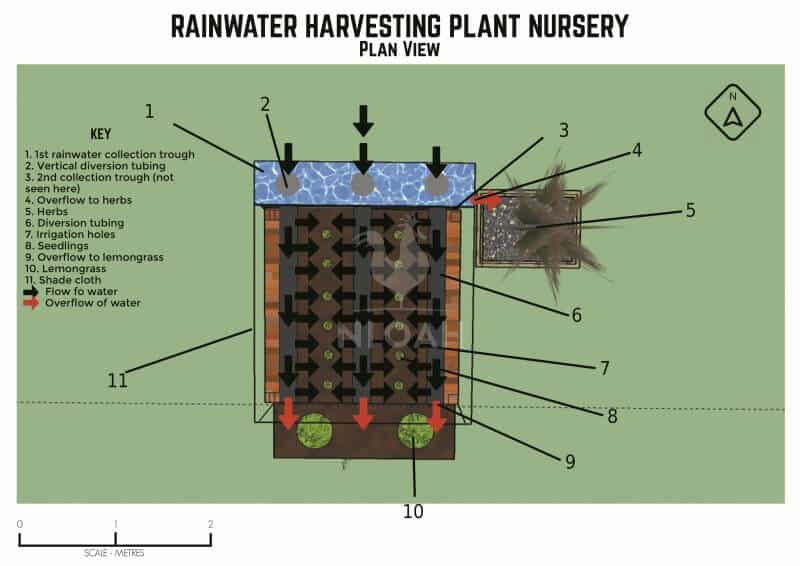
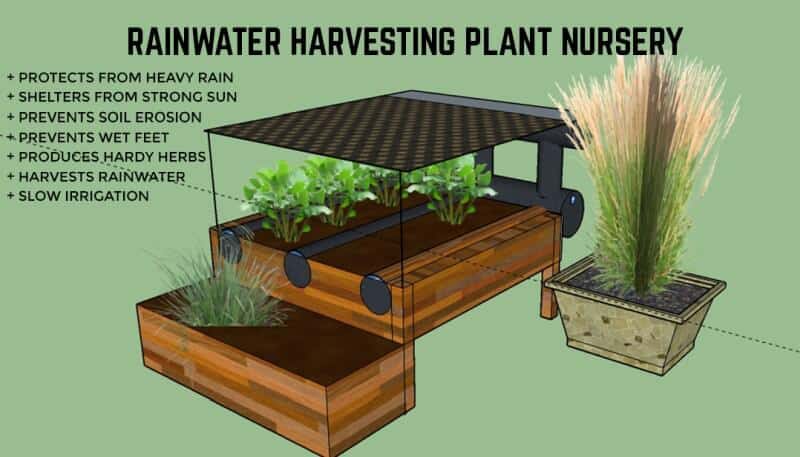
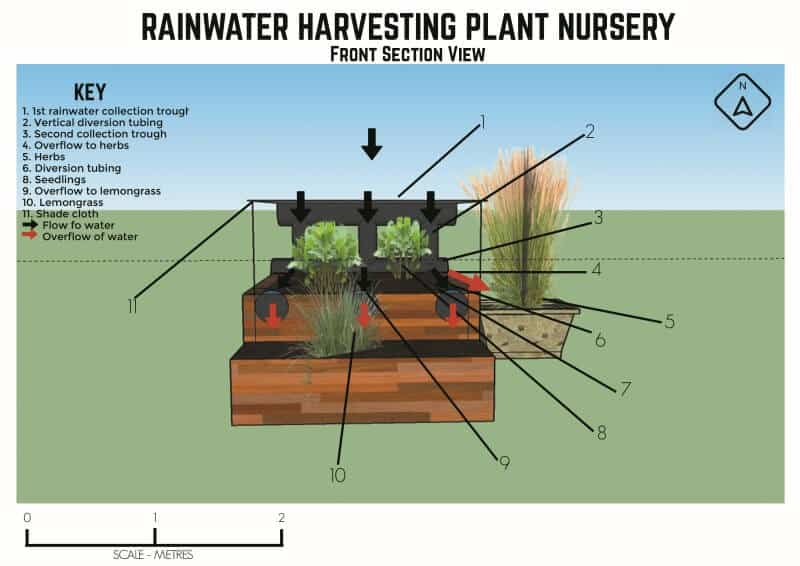
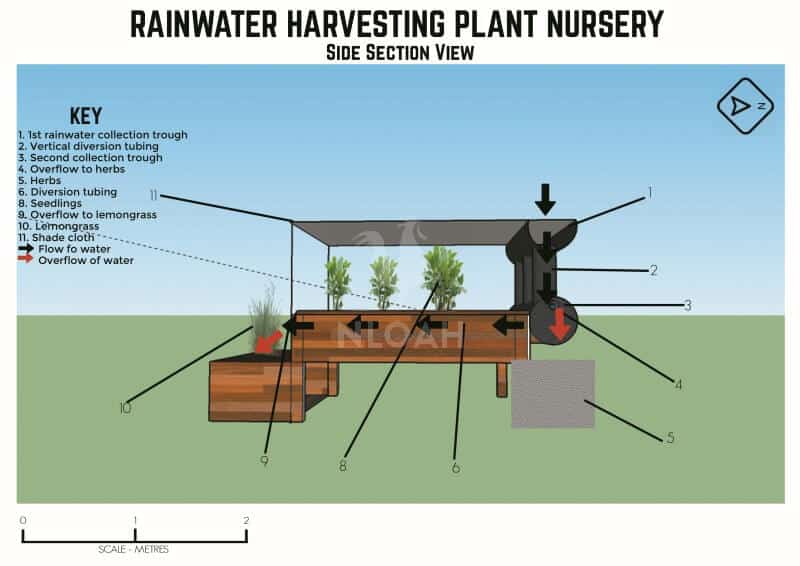
How the Design Works
The dual-purpose design, serving to irrigate seedlings while also providing protection, functions pretty simply.
1. Rainwater hits the top gutter
Made from plastic tubing, the top gutter is for catching rainwater. The rainwater goes into the gutter, with the curved sides serving to collect more water and store it in the case of a short-term back-up.
There is a mesh on top of the gutter which helps to filter out any leaves that may try to get in. The gutter is wide so that it can slow the water rushing down, and spread it.
2. The water travels down the tubes
The gutter has three holes and the water travels down these and down the rear tubes. From here it goes into a bottom getter. Again, this slows the speed of the water, stopping it from hitting the seedlings with full force. The water spreads across the gutter. The pipe is enclosed at both ends, with a small overspill hole left for water to spill into a hardy plant at the side, if the rainwater becomes too much.
3. The rainwater enters the three horizontal pipes.
The rainwater travels down the horizontal pipes. While mostly flat, they tilt ever so slightly to use gravity to pull the water down the pipes, spreading the wealth.
The horizontal pipes have small holes in them. These holes allow water to exit the pipe into the soil that runs parallel to the pipes. The holes are low down to feed the soil from the bottom and encourage root growth.
The holes are small so the build-up of water in the pipe can cause pressure, creating a constant tiny flow of water for consistent irrigation, without saturating the soil.
The pipes are again enclosed, with overspill gaps at the top of the southern side of the pipes, where the overflow can run into hardy plants.
4. The top is covered with a removable shade cloth and Perspex.
The plastic affords protection from the hammering rains that come during the tropical season, while the shade protects from the harsh bright sun. However, on days where the rain is not so bad, the Perspex can be removed. On the days that the sun isn’t so prevalent, the shade can be pulled back.
What Problems Are Solved by the Design?
The design not only has many elements — as in the seedlings feeding, the rainwater harvesting mechanisms, and the overspill plants — it also serves a number of functions. While collecting rainwater is one of those functions, here are a few of the others.
Sun Burns
In the tropics, the sun has a very high UV factor and burns extremely hot. For the plants, this can be very tiresome. While the sunlight helps the plant produce a lot of fruit quickly, it also keeps the plant on overdrive.
Moreover, for seedlings and cuttings trying to focus their energy on growing taller, hot sun can burn the delicate new sprouts, while also tiring out the plants. Diverting the energy to protecting themselves from the sun, the seedlings begin to wilt or bolt (growing up tall and spindly, and blooming early).
This design looks to solve the issue of the blazing sun wilting those seedlings. While we had previously tried to sow seeds straight into the soil, the seedlings had suffered under the harsh sun, despite the rainy season being on its way. On cloudless days, there was no hiding from the sun’s rays, and the seedlings died off.
This is an issue that can affect most USA climates in the summer. From sub-tropical regions across to desert climates and temperate areas, you’ll find that sunny days are a blessing to bigger plants but seedings need protection.
This design provides shade for the plants, while the moist soil keeps a consistent temperature, that incubates the seedlings.
The shade helps to stop the sun’s heat from evaporating the moisture in the soil, helping to provide more ideal conditions for delicate plants.
The drip-fed system will only release rainwater as it is needed in the soil, which keeps the soil at a constant moisture, negating issues of thirsty seedlings without saturating the roots..
Rain Causes Erosion
When rainy season hits it feels as though it comes all at once. When the floodgates open and the heavens empty on your garden, you know the rainy season is upon you and you need to ensure you have protective measures fast.
The problem with very wet weather, especially in sloped gardens, is that the torrential downpour comes at such speed and intensity, that the soil doesn’t have time to absorb all the water. This causes flooding. This isn’t reserved for tropical environments – in fact desert climates such as Arizona and California suffer from this concept terribly.
On a flat area, this floodwater stands and eventually soaks into the soil, which is great for that hydrated patch. However, if the soil is too compact or has too high a clay density, the water won’t sink in and instead will evaporate at the next sun. This isn’t all that useful to our plants. High clay areas like New Mexico, suffer from this problem.
On a sloped area, there can be some real issues with floods. The water rushes downward, which takes the soil with it, eroding beds as it goes. Over time, if this keeps happening, it will cause scars in the land where the water streamlines and runs more rapidly, eroding the earth and shaping the land into valleys.
This causes loss of nutrients as the soil runs off the land, and drought as the water cannot sink into the remaining dry ground. The flooding/droughting issue affects all climates where soil erosion occurs.
When completing this design, we found we needed to protect our seedlings from rotting as flooding on our terraced garden meant that delicate new plants struggled with wet feet. While the terraces preventing soil eroding, the high clay leads to saturation.
The plant nursery raises them off the ground to a drier area. By drip-feeding the soil with a gravity-fed system that releases water on demand, the seedlings have ample supply of rainwater from the rainy days, but won’t get hammered by the droplets or flooded by the excess on the wetter days.
Again, no matter where you are in the world, seedlings tend need well-drained soil, so finding a solution that caters for this will help them get off to a good start.
Heavy Rainfall Events
While the idea that our seedlings would be safe above ground seems nice, in fact the rainy days of the tropics can come in full force, with winds to match on a real bad day.
This simple design doesn’t really accommodate for storing the massive amount of water that would come down on any given day. Moreover, as the seasons crossed over, rain came more frequently, with fewer dry days.
In this sense, our design had to deal with excess water. If the rainwater fills all three of the pipes, we’ll have a great supply. But with nowhere for it to go, the pressure will buildup, pushing more water into the soil, drowning the seedlings.
Alternatively, the vertical pipes will simply overflow. In this case, the water in the horizontal pipes will sit still and stagnate, causing problems to the seedlings.
Without employing a tank to deal with excess rainfall, this design helps to prevent these issues above. Excess rainfall events also occur in temperate climates in the colder seasons. This design will help to jeep water moving to protect against these problems.
In the design, to keep the water flowing while using as much of the excess as we can, we tilt the horizontal pipes downward. This tilt keeps the rainwater flowing through the pipes. As it reaches the ends of the pipes, an overspill hole allows for the water to be diverted to hardy plants with a tolerance for wet feet such as ginger and lemongrass.
If this design were to be employed in a drier climate, you may need to lower the overspill levels as all excess water needs to move through the pipes to prevent stagnation.
It Prevents Physical Damage From the Elements
All climates have seasons where the weather can be damaging. Whether it’s the sand blasting plants in a sandstorm in the desert, or the frost in the dead of winter, weather needs to be managed,
The weather during the rainy season can be a real physical challenge. While the sun’s rays beating down can do a lot of damage to a tiny plant, the physical beating they can take in rainy season is something to think about. Similarly, fall and winter in temperature climates tends to dump buckets of water on a garden, which can break stems and damage petals.
Hardy, native plants are very resilient. In this example, hardy native greens were selected. They can take a lashing from the rain and wind and still continue to grow big leafy yields. However, as seedlings, they can be a little precious and find the dense, round droplets of torrential rain a little difficult to comprehend.
The plant nursery provides a shield from the harsh rain via the Perspex. On cloudier days, the Perspex can help to reflect sunlight, while also providing a barrier from the very heavy droplets of rain.
Tilted slightly backward, the Perspex directs the rain backward into the gutter when it falls on the roof. In temperate climates, you’ll find that you can move the Perspex and shade to provide different protection depending on the season.
It’s Human-Scale
As one permaculturist, the garden in which this design belongs was tended alone. In this sense, the design was constructible by one single person, without help from anybody else. Human-scale design is an imperative lesson to learn for any permaculture gardener.
Employing a solution like this can help you to see the strengths and flaws of the design without altering anything too rapidly or irretrievably.
This solution could be put in place quickly as soon as the seasons started to change, without too much organization, manpower, money, or pre-determined plan. This allowed for a quick solution which proved extremely fruitful, without gobbling up resources.
As it only needed to last one season (seedlings were planted to create a forest floor that self-maintains), the design could go up by hand and last for its needed time before being recycled.
Tips for Designing Site-Specific, Time-Relevant Solutions
Designing solutions to go in your garden should be relevant to your garden and your lifestyle. Any good permaculturist knows that a solution is something that works well with you and your habits and needs. In this respect, we need to have a vision first and then devise something to manifest that vision. Here are some tips for getting started in making your vision a reality.
First, Observe
This can’t come up enough times when we’re considering permaculture design. Observation is perhaps the most key skill you can develop in order to really understand and develop complex systems that serve multiple purposes.
For you, as a permaculture designer, you’re looking to ease the problems in your garden, release some of the burden of your workload, and increase the yield of your hard work.
To do this, observe the patterns that happen within the garden. This observation will indicate what you need to do to be able to solve any Issus you’re having. As a keen observant permaculturist, if you can see that soil needs nitrogen from an abundance of nettles, you can find solutions where you least expect them from watching your site over time.
In the circumstance of designing this plant nursery, observation involved a daily diary of seedlings planted in various positions across the terraces of the garden. By noticing the different reactions to the soil, sunlight, and precipitation, we were able to recognize the seedlings’ needs.
Be Speciesist
While we appreciate all living things are one within the complex systems around us, when selecting plants to go into your personal systems, you need consider their needs and your own.
When thinking about the plants to go into the plant nursery, we wanted to have a variety of lettuces. We found that even with special treatment non-native plants were eaten up by bugs. While we tried a number of techniques for pest control, we only had long-term solutions and needed something in the short-term.
With plant selection, the short-term plan managed to scale up to a long-term plan. By selecting native hardy leafy greens, we were able to protect our yield from the bugs, who weren’t interested in these varieties.
Moreover, by choosing these crops, we could plant them in the soil and they’d go nuts, spreading like wildfire through the garden. Not only did this provide us with a whopping great yield of lettuce for the restaurant, it also protected the soil from erosion and moisture-loss, kept the weeds at bay, and provided a habitat for other insects and organisms.
Think about what is native to your area and include species in your plant selection that serve multiple functions. Try to think about the native varieties that will work well to complement your design, while lending an extra hand to solve your issues. Consider hardy perennials specific to your climate, whether that be tropical, sub-tropical, temperate, or desert.
The Problem is the Solution
The old permaculture adage is one to keep right at the front of your mind. When you’re observing the garden and selecting plants, you feel as though you’re king of the crops. However, when problems arise, we find ourselves having a crisis of faith in our projects, ourselves, and our ability to learn from our mistakes.
However, with every system we encounter feedback, and accepting those changes is how we learn to move forward to solve further issues in our eyeline. In this sense, when hurdles do crop up, consider how they can be changed to solve an issue and how their change, in itself, solves issues.
For example, with this design, the Perspex on the roof created a permeable surface, which allowed rainfall to run-off in all directions. This not only wasted the water, it made the ground soggy, which caused the plant nursery to lean backward and eventually fall. By tilting the Perspex backwards, we were able to collect more rainwater and prevent the soggy ground.
As a permaculture designer, it’s your job to look at the problems that may come back from your design, and work out how to re-engineer this to solve more problems and reduce your need for intervention.
Before we Wrap This Up…
Permaculture design is one part imagination, one part information, and a whole bunch of trial and error. Observation is key to any design as we solve problems better with the more information and knowledge we have around the issue, in the context of its space and time.
By looking at the wider picture, we are able to gain information that allows us to design systems that can serve as multifunctional permaculture solutions in our survivalist gardens.
When it comes to this design, rainwater harvesting and plant protection were combined together to create a solution that allowed us to extend our growing season, nurture native plants for the future, and birth the beginning of our forest restaurant garden. This is not the only hybrid dual-solution you can employ in your environment.
Maybe you live in a desert climate and are considering employing a medicinal herb spiral; why not put a compost bin in the middle, or a rainwater harvesting slow irrigation ceramic pot to help water the herb spiral in the dry weather?
Perhaps you live in a more temperate climate and are finding that your driveway collects a lot of rainwater. Why not employ a French drain with grapes planted alongside, working as a drainage system, edible yield, and irrigation system?
While this is a site-specific design, don’t be afraid to observe your own survivalist garden, make a few space-time tweaks, and employ this designing your own way to serve your permaculture garden, needs, and lifestyle.
Designing dual systems is easier than you realize — you just need to watch a little, tweak a little, and experiment to solve issues logically and understand the feedback.
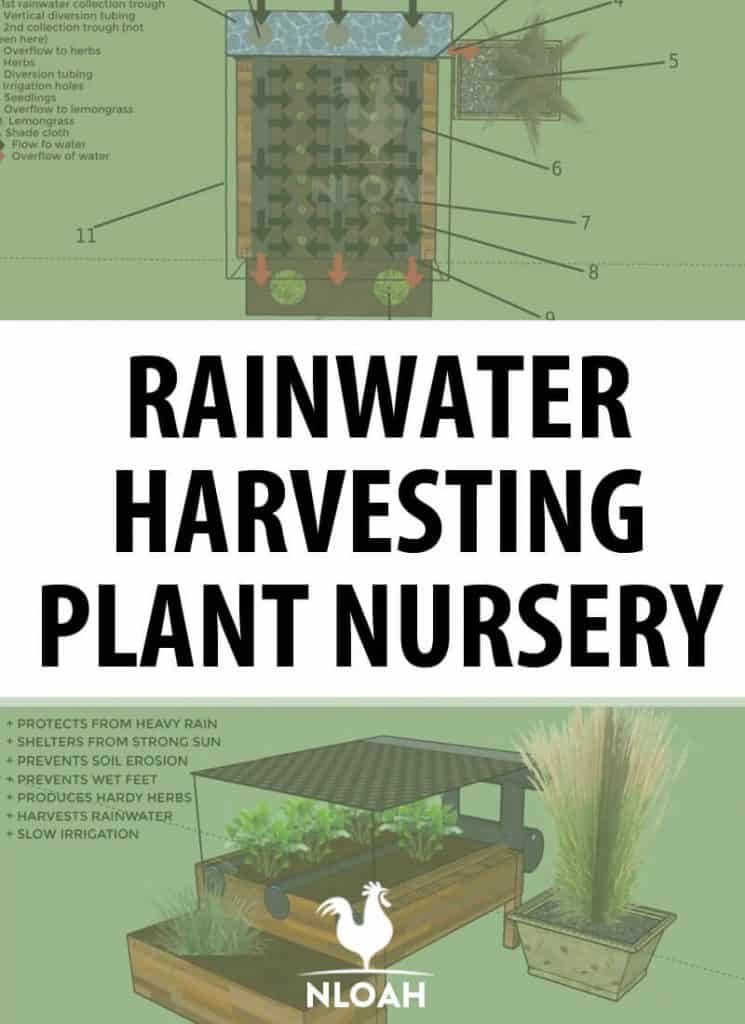
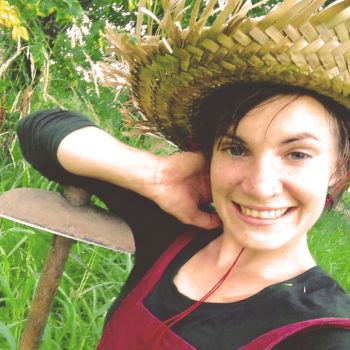
Emmy Jenkins, AKA Permie Emmy, has spent many years traveling around the globe and working remotely, dipping her toes into a myriad of disciplines. Having spent several years volunteering on sustainable farms, Emmy chose to delve deeper into permaculture theory to understand the social and economic patterns often neglected in the philosophy. When she’s not planting edible gardens and frolicking the jungle, she’s consulting on projects around the world to help permaculturalists to understand regenerative ‘Fairshare’ economic patterns and to encourage People Care patterns that focus on biomimicry.
